

Scutum (shield) Sub-rectangular scuta.
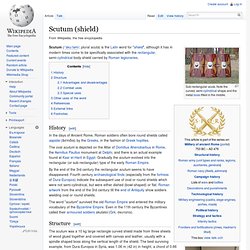
Note the curved, semi-cylindrical shape and the metal boss fitted in the middle. Bronze edge from a Roman scutum. Varangian Guard. The Varangian Guard (Greek: Τάγμα των Βαράγγων, Tágma tōn Varángōn) was an elite unit of the Byzantine Army, from the 9th to the 14th centuries, whose members served as personal bodyguards of the Byzantine Emperors.
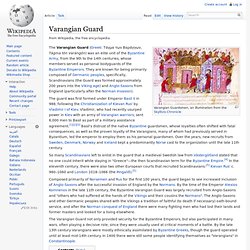
They are known for being primarily composed of Germanic peoples, specifically, Scandinavians (the Guard was formed approximately 200 years into the Viking age) and Anglo-Saxons from England (particularly after the Norman Invasion). The guard was first formed under Emperor Basil II in 988, following the Christianization of Kievan Rus' by Vladimir I of Kiev. Vladimir, who had recently usurped power in Kiev with an army of Varangian warriors, sent 6,000 men to Basil as part of a military assistance agreement.[1][2][3] Basil's distrust of the native Byzantine guardsmen, whose loyalties often shifted with fatal consequences, as well as the proven loyalty of the Varangians, many of whom had previously served in Byzantium, led the emperor to employ them as his personal guardsmen.
Byzantine flags and insignia. The double-headed Byzantine Eagle.
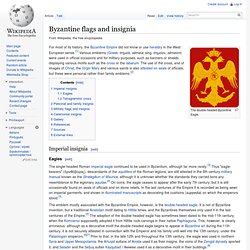
For most of its history, the Byzantine Empire did not know or use heraldry in the West European sense.[1] Various emblems (Greek: σημεία, sēmeia; sing. σημείον, sēmeion) were used in official occasions and for military purposes, such as banners or shields displaying various motifs such as the cross or the labarum. The use of the cross, and of images of Christ, the Virgin Mary and various saints is also attested on seals of officials, but these were personal rather than family emblems.[2] Imperial insignia[edit] Eagles[edit]
Byzantine army. The Byzantine army or Eastern Roman army was the primary military body of the Byzantine armed forces, serving alongside the Byzantine navy.
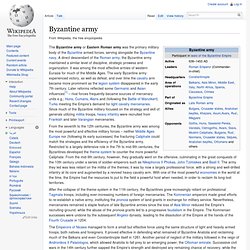
A direct descendant of the Roman army, the Byzantine army maintained a similar level of discipline, strategic prowess and organization. It was among the most effective armies of western Eurasia for much of the Middle Ages. The early Byzantine army experienced victory, as well as defeat, and over time the cavalry arm became more prominent as the legion system disappeared in the early 7th century.
Later reforms reflected some Germanic and Asian influences[1] – rival forces frequently became sources of mercenary units e.g.; Huns, Cumans, Alans and (following the Battle of Manzikert) Turks meeting the Empire's demand for light cavalry mercenaries. Since much of the Byzantine military focused on the strategy and skill of generals utilizing militia troops, heavy infantry were recruited from Frankish and later Varangian mercenaries.
History[edit] 1. The Illuminati and the House of Rothschild. By Johnny Silver Bear | SilverBearCafe.com The "Illuminati" was a name used by a German sect that existed in the 15th century.

They practiced the occult, and professed to possess the 'light' that Lucifer had retained when he became Satan. In an attempt to document the origins of an secret organization which has evolved into a mastodonic nightmare, successfully creating and controlling a shadow government that supercedes several national governments, and in whose hands now lay the destiny of the world, one must carefully retrace its history.
The lengths to which this organization has gone to create the political machinery, and influence public sentiment to the degree necessary to propel its self-perpetuating prophecy, are, quite frankly, mind boggling. Yet the facts provide for the undeniable truth of its existence. In 1743 a goldsmith named Amschel Moses Bauer opened a coin shop in Frankfurt, Germany. Amschel Bauer had a son, Meyer Amschel Bauer. There were a couple of problems, though. Wikipedia: Eagle (heraldry) One style of heraldic eagle, typical of German and Scandinavian heraldry In medieval and modern heraldry eagles are often said to indicate that the armiger (person bearing the arms) was courageous, a man of action and judicious.
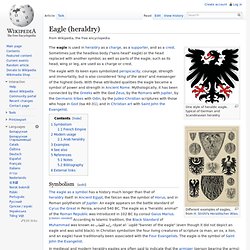
[citation needed] Where an eagle's wings were spread ("displayed") it was said to indicate the bearer's role as a protector. [citation needed] Heraldry.